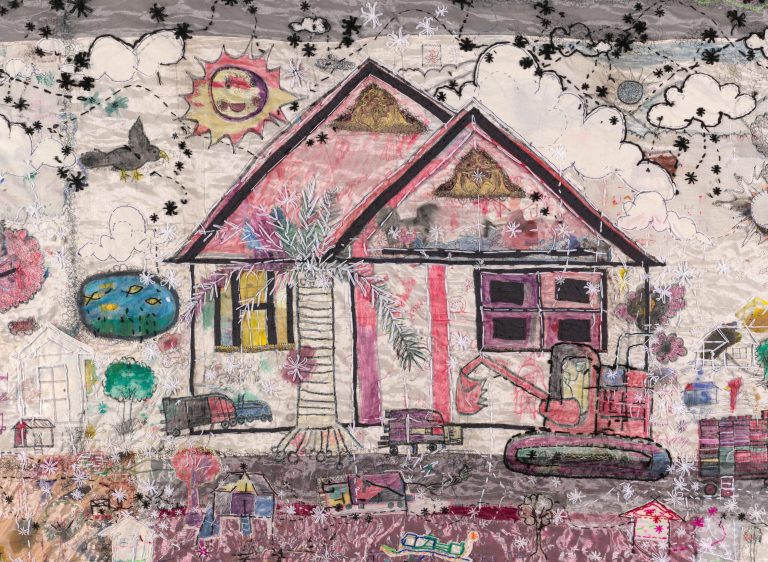We acknowledge the Traditional Owners of the land on which the Queensland Art Gallery | Gallery of Modern Art stands and recognise the creative contribution First Australians make to the art and culture of this country.

Jamilah Haji / Thailand b.1989 / Test and beauty of life no.3 (detail) 2020–21 / Organza, calico, silk, various lace fabrics, used clothing fragments, markers and synthetic polymer paint / 290 x 477cm / Courtesy: Jamilah Haji / © Jamilah Haji
Jamilah HajiTest and beauty of life no.3 2020–2021
Not Currently on Display
Motivated by her faith, Jamilah Haji applies her creative skills to honour and inspire the Muslimah’s (Muslim woman’s) way of life. She is particularly inspired by Islamic sermons regarding the roles and responsibilities of pious women — considered the pillar of the nation — to their families and societies.
Haji’s work often aims to inspire spiritual strength and an integrity of faith understood to be powerful enough to overcome personal or collective struggle. Test and beauty of life no.3 represents Haji’s recent turn to imagery arising from her and her brother’s experience of prejudice as people with disabilities, and her teaching and work with disabled youth.
To represent more positive social attitudes toward persons with disability, Haji began incorporating embroidered motifs of drawings made by youth with intellectual disability — primarily her brother, who loves drawing cars and trucks. Created from drawings on canvas layered with machine and hand embroidery, this work directly connects viewers with the participants’ imaginations. Haji’s unique textiles arise from personal experiences and are made with the touching love of a sister who would like to see ‘people live in this world with freedom, equality’.1
Endnotes:
1 Jamilah Haji, email correspondence, January 2020.
As one of four children in a family of hijab makers, from an early age Jamilah Haji was attracted to art — especially sewn textile techniques. Since childhood, her embroideries enabled her to contribute to the family income, and she developed her textile-based practice as part of her formal university art education. Today, using her mother’s sewing machine, Haji embroiders large, densely layered textiles that convey her expressive and deeply personal response to her life in the south of Thailand.
Haji’s art is motivated by a desire to share her hopes and aspirations in the face of daily political and military threats, and to explore the marginalisation of a community of disabled youth she closely associates with.